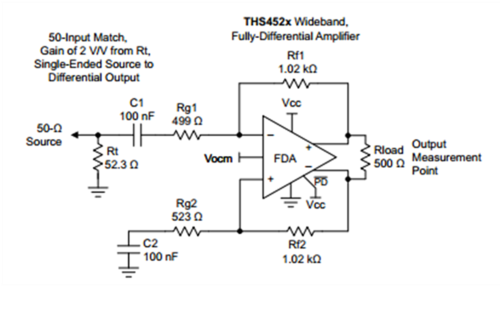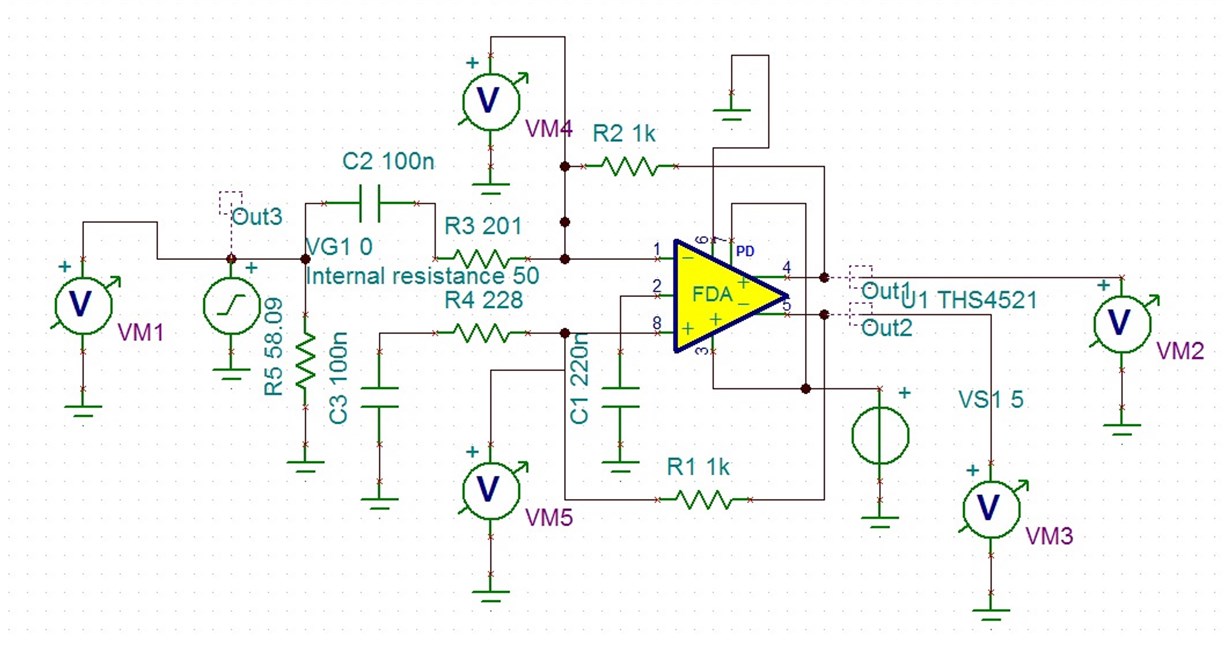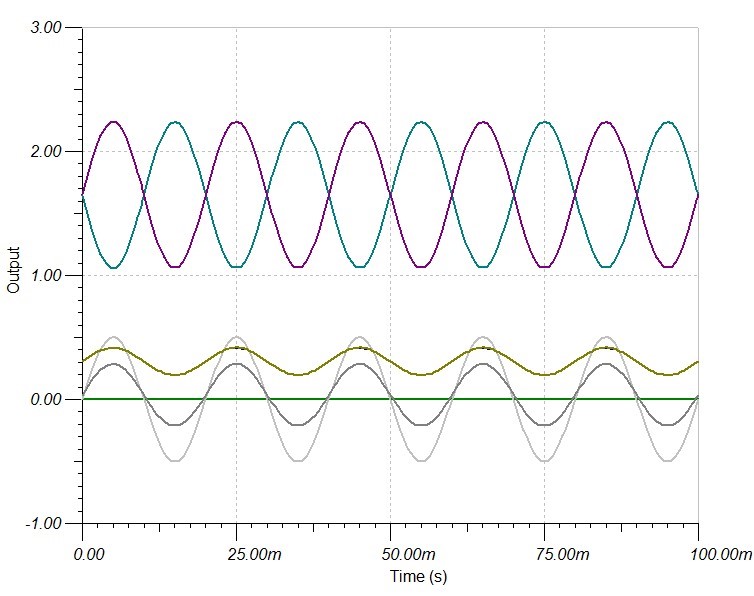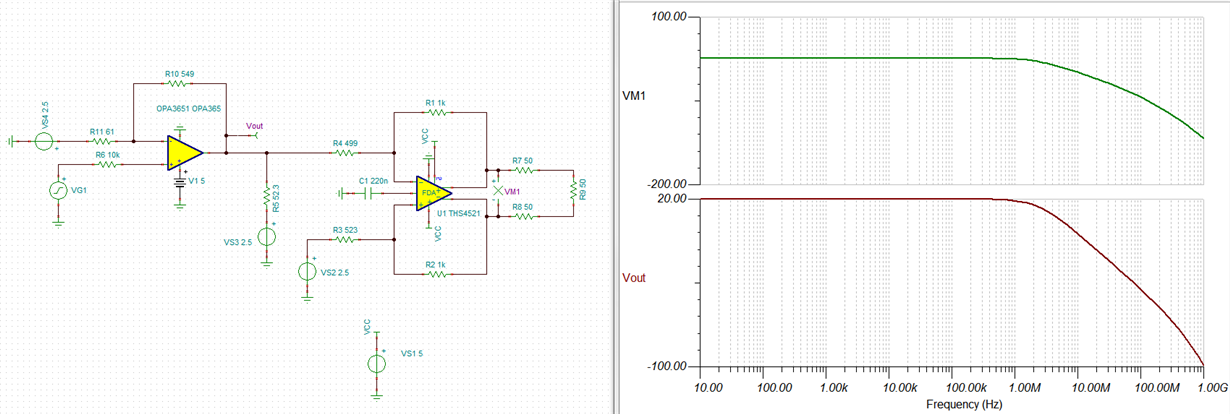Other Parts Discussed in Thread: THS4551, TINA-TI, OPA365
I would like to amplify a low frequency signal of about 100-2000Hz that ranges from -100 mV to 100mV upto about -3 V to 3 V. When I use the THS4521 amplifier to amplify a toy signal from a wave generator it amplifies properly however when I connect my actual sensor to the amplifier circuit all of the input signal just dies out. I have checked the sensor and it is working appropriately by itself so there must be some issue with its interaction with the amplifier circuit. Would appreciate help regarding any possible solutions or ways to debug this problem.







